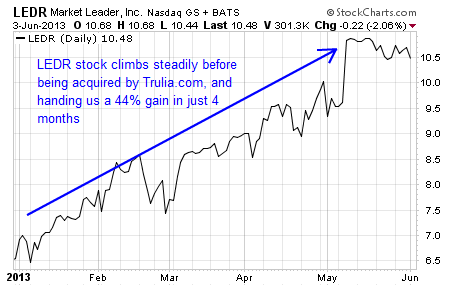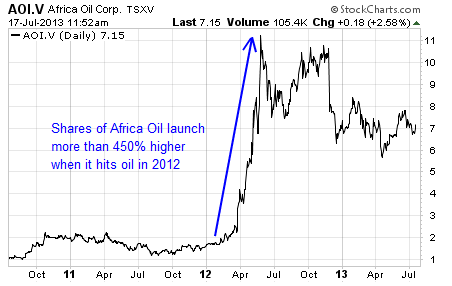Until you hear bullets whizzing by your ears and mortars exploding over your head, they say war is incredibly, mind-numbingly boring.
Investing is the same way – if you’re doing it right. 99% of the time, it should be boring. You should be waiting patiently – sitting on your hands and waiting for the firefight to begin.
And those thrilling moments should make you significantly richer – not poorer.
The real trick is to know when to wait – and when to take action.
I consider it my specialty to know the difference.
I’ve achieved a 87% “win-ratio” in my model portfolio. That means well over half the time, I know when to do nothing – and when to pull the trigger.
I’ve closed out 20 of my last 23 recommendations with profits.
I’ve done so with a simple strategy that has everything to do with knowing the difference between a good opportunity and a bad one.
I call my investing strategy catalyst investing. And I firmly believe it could help you achieve superior returns and amazing profits. Let me explain…
A catalyst is an event that has a very sudden and dramatic impact on the future of a company and it’s stock price. Catalysts can completely change a company’s growth profile and cause a rush of investors into the stock, considerably driving up the share price in a short period of time.
Sometimes the climb is gradual, as was the case with Market Leader (NASDAQ:LEDR), before Trulia.com (NYSE:TRLA) announced its acquisition. We made 44% with LEDR in just four months using catalyst investing.

Other times a stock surges almost overnight – this was the case when Africa Oil (OTC: AOIFF) hit pay dirt in Kenya last year.

Catalysts come in all shapes and sizes and they affect all types of companies. But one thing is constant … and that is the potential for investors to reap significant capital gains using catalyst-based investing strategies.
The trick is to make sure the events that you anticipate are significant, positive and have a measurable impact on the company in terms of important metrics – such as sales, earnings, product distribution and market share.
You’re also likely to have more success if you focus on a few types of catalysts to begin with. Over time, broaden your criteria.
One of my favorite catalysts to look out for is a massive new discovery by an oil or mineral explorer, like Africa Oil.
You can track these relatively easily because companies will publish their upcoming drilling targets to tell the market about their activities. That means you have the ability to forecast when they might happen. In fact, I’m tracking several drilling events right now for a company I believe could be the next Africa Oil (you can learn more about this company here).
I also look in recovering industries for stock-moving catalysts. The housing market recovery is a great example right now since many stocks with significant exposure to homebuilding and renovation markets are enjoying revenue and earnings growth.
And of course blockbuster product introductions can also be huge positive catalysts for stocks. The best example here is the Apple (NASDAQ: AAPL) iPhone, which completely overwhelmed the handheld phone market and led to huge sales growth for the company.
These are just a few examples of common catalysts. There are literally dozens more, and with a little practice I’m confident you can put the strategy to work and create a winning track record and solid portfolio performance.
Remember to focus on catalysts that have a significant, positive impact on sales and earnings.
If you can’t link the catalyst to these types of metrics, they are likely just normal events, and are too small to justify an investment in the company.
Editor’s note: If you’d like a little more information on how to implement catalyst-based investing strategies, feel free to check out a special report I’ve recently written on the subject by clicking here. This report explains all you need to know.
If I can get you to read, understand and even follow the advice in this report even once, then I’ve succeeded. And if you stick by the advice over time I firmly believe you’ll have more success with your investments.
After all, that’s why you’re here, isn’t it?
 Facebook
Facebook
 Twitter
Twitter